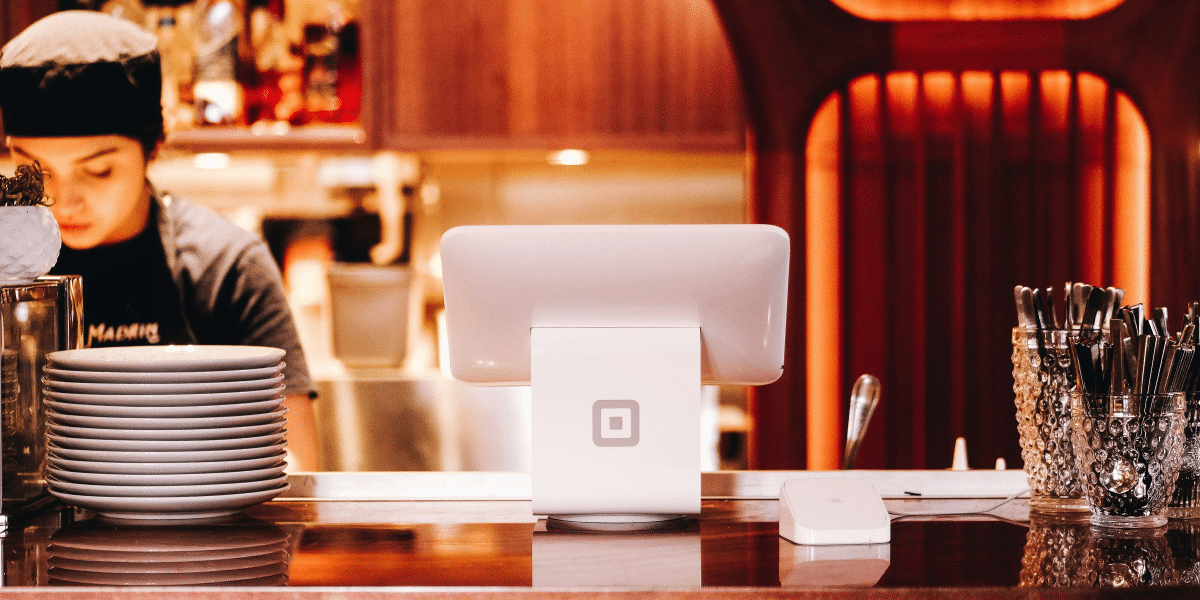The restaurant industry, a cornerstone of culinary culture and social gatherings, has undergone a noticeable paradigm shift propelled by technological advancements. Technology has revolutionized how restaurants operate, enhancing efficiency, customer experience, and profitability from front-of-house operations to back-end logistics.
This article explores the revolutionary impact of technology on restaurant management, exploring emerging trends, challenges, and opportunities in shaping the future of dining.
Streamlining Operations
Streamlining your operations in restaurant management is crucial for maximizing efficiency, reducing costs, and ensuring a seamless dining experience for your patrons. Technology is pivotal in this endeavor, offering innovative solutions to automate processes, optimize workflows, and enhance productivity.
Key strategies for streamlining operations in restaurant management through technology include restaurant management software, inventory management systems, point-of-sale systems, and mobile ordering and payment options.
Restaurant management software (RMS)
Implementing a comprehensive RMS solution centralizes various aspects of your restaurant operations, including inventory management, employee scheduling, table reservations, and POS functionalities. Cloud-based RMS platforms facilitate real-time data access and collaboration among your staff members, enabling efficient decision-making and streamlined workflows.
Inventory management systems
Leveraging inventory management systems automates the tracking and monitoring stock levels, ingredient usage, and supply chain logistics. These systems help you prevent overstocking or stockouts, minimize food waste, and optimize purchasing decisions based on demand forecasts and consumption patterns.
Point-of-Sale (POS) systems
Modern restaurant POS systems go beyond basic transaction processing to offer advanced features such as order customization, split billing, and integrated payment processing. By streamlining order management and reducing manual errors, POS systems enhance your operational efficiency and improve the speed of service.
Mobile ordering and payment options
Introducing mobile ordering and payment options lets your customers place orders, make payments, and provide feedback conveniently through their smartphones or tablets. Mobile apps or web-based platforms facilitate contactless transactions, reduce wait times, and enhance the dining experience.
Kitchen display systems (KDS)
KDS solutions replace traditional paper tickets with digital displays in the kitchen, allowing your chefs and kitchen staff to view and handle orders in real time. KDS streamlines order preparation. It reduces errors and enhances communication between front-of-house and back-of-house teams. This easy workflow leads to faster turnaround times and improved food quality.
Employee training and communication
Utilizing digital training platforms and communication tools helps streamline your employee onboarding, training, and ongoing communication. Mobile apps or web-based platforms provide access to training materials, performance metrics, and shift schedules, fostering a cohesive team environment and improving employee productivity.
Data analytics and reporting
Harnessing data analytics tools enables your restaurant to gain insights into sales trends, customer preferences, and operational performance. Analyzing key metrics such as your revenue per table, average order value, and peak hours allows your managers to make data-driven decisions to optimize menu offerings, staffing levels, and promotional strategies.
Task automation and integration
Automating repetitive tasks and integrating disparate systems further streamline your restaurant operations. For example, integrating POS systems with inventory management software automates stock updates and ingredient tracking, reducing manual data entry and minimizing errors.
Enhancing Customer Experience
As the competition grows more fierce and consumer preferences evolve, delivering exceptional customer experiences is paramount for your restaurant. Technology is pivotal in this endeavor, offering innovative solutions to engage, delight, and retain patrons.
Digital reservation platforms and waitlist management systems enable diners to book tables in advance and receive real-time updates on table availability, reducing wait times and optimizing seating arrangements.
Moreover, mobile applications and self-service kiosks empower your customers to customize orders, expedite transactions, and provide feedback, fostering a sense of convenience.
Personalization and Loyalty Programs
Personalization is a crucial differentiator in driving customer loyalty and satisfaction in an increasingly interconnected world. Customer relationship management (CRM) and advanced data analytics tools can enable your restaurant to segment its customer base, identify trends, and tailor offerings to individual preferences.
Loyalty programs, integrated with mobile applications or digital wallets, loyalty programs incentivize repeat business and encourage customer engagement. Leveraging machine learning algorithms and predictive analytics enables your restaurant to anticipate customer behavior and recommend relevant menu items. This data lets you deliver targeted promotions, enhancing the dining experience and maximizing customer lifetime value.
Embracing Contactless Dining
The COVID-19 pandemic catalyzed a seismic shift towards contactless dining, prompting restaurants to adopt innovative solutions to ensure guest safety and compliance with health regulations. Contactless ordering and payment systems powered by QR codes or mobile applications minimize physical contact and reduce the risk of transmission.
Additionally, menu digitization and virtual dining experiences enable your customers to browse offerings, place orders, and interact with your staff members from the comfort of their smartphones or tablets. By embracing contactless technologies, your restaurant prioritizes health and hygiene and future-proofs its operations against unforeseen disruptions.
Challenges and Considerations
While technology offers numerous benefits for enhancing restaurant management and customer experience, it also presents challenges and considerations that you and your restaurant managers must navigate effectively. These challenges include implementation costs, integration complexity, training, cybersecurity risks, and data privacy and compliance.
Cost of implementation
One of the primary challenges is the initial cost of implementing technology solutions. Investing in hardware, software, and infrastructure upgrades can be expensive, especially if you run a small independent restaurant with a limited budget.
Additionally, ongoing maintenance, support, and software licensing fees add up to your total cost of ownership.
Integration complexity
Integrating disparate technology platforms and systems can be complex and time-consuming. Compatibility issues, data synchronization challenges, and interoperability constraints may arise when you integrate POS systems, inventory management software, reservation platforms, and other third-party applications.
Seamless integration ensures smooth operations and data consistency across your restaurant ecosystem.
Training and adoption
Introducing new technology tools and workflows requires comprehensive training and support for your restaurant staff. Your employees must learn to use POS systems, mobile ordering platforms, and other digital tools effectively to minimize errors and maximize productivity.
Resistance to change and technological literacy gaps among your staff members may impede adoption and hinder the successful implementation of technology solutions.
Cybersecurity risks
With the proliferation of digital transactions and data storage, your restaurant may become vulnerable to cybersecurity threats such as data breach incidents and malware attacks. Protecting sensitive customer information, payment data, and proprietary business data is paramount to maintaining trust and compliance with regulatory requirements.
Implementing robust cybersecurity measures, including encryption, firewalls, and intrusion detection systems, is essential to mitigate cybersecurity risks.
Data privacy and compliance
When collecting, storing, and processing customer data, your restaurant must comply with data privacy regulations. Data privacy, transparency, and consent are critical for building trust and maintaining regulatory compliance.
Your restaurant must establish clear data privacy policies, obtain consent for data collection, and implement secure data handling practices to protect customer privacy rights.
Operational disruption
Introducing new technology solutions may disrupt existing workflows and business processes, leading to temporary productivity slowdowns or operational challenges.
Effectively managing the transition requires careful planning, stakeholder engagement, and phased implementation to minimize disruptions and maximize the benefits of technology adoption.
Customer experience impact
While technology can enhance the customer experience, poorly implemented or malfunctioning technology solutions may have the opposite effect, leading to frustration, dissatisfaction, and negative reviews. Ensuring the reliability, usability, and accessibility of technology tools is essential for delivering a positive dining experience and maintaining customer loyalty.
Dependency on external providers
Suppose your restaurant relies on third-party technology vendors for software-as-a-service (SaaS) solutions or cloud-based services. In that case, it may be susceptible to disruptions caused by vendor downtime, service outages, or contractual disputes.
Establishing contingency plans, backup procedures, and service level agreements (SLAs) with technology providers helps mitigate risks and minimize the damage caused by potential disruptions in restaurant operations.
The Future Landscape
Looking ahead, the future of restaurant management is ripe with innovation and opportunity. Augmented reality and virtual reality technologies promise immersive dining experiences, allowing your customers to preview dishes, explore culinary cultures, and interact with virtual chefs.
Moreover, integrating Internet of Things (IoT) devices, such as smart kitchen appliances and sensor-equipped inventory systems, optimizes resource utilization and minimizes waste. Artificial intelligence (AI) algorithms can empower your restaurant to analyze vast datasets, forecast demand, and automate decision-making processes, driving operational efficiency and profitability.
Better Restaurant Management Through Technology
Technology has reshaped the landscape of restaurant management, offering you unprecedented opportunities for innovation, efficiency, and customer engagement. Embracing digital transformation allows your restaurant to streamline operations, enhance customer experiences, and future-proof your business against evolving market dynamics.
However, success in this digital age necessitates a holistic approach, encompassing cybersecurity, compliance, and investment in human capital. As your restaurant navigates this transformative journey, it must remain agile, adaptive, and customer-centric to thrive in an increasingly competitive marketplace.
Published by: Khy Talara

















